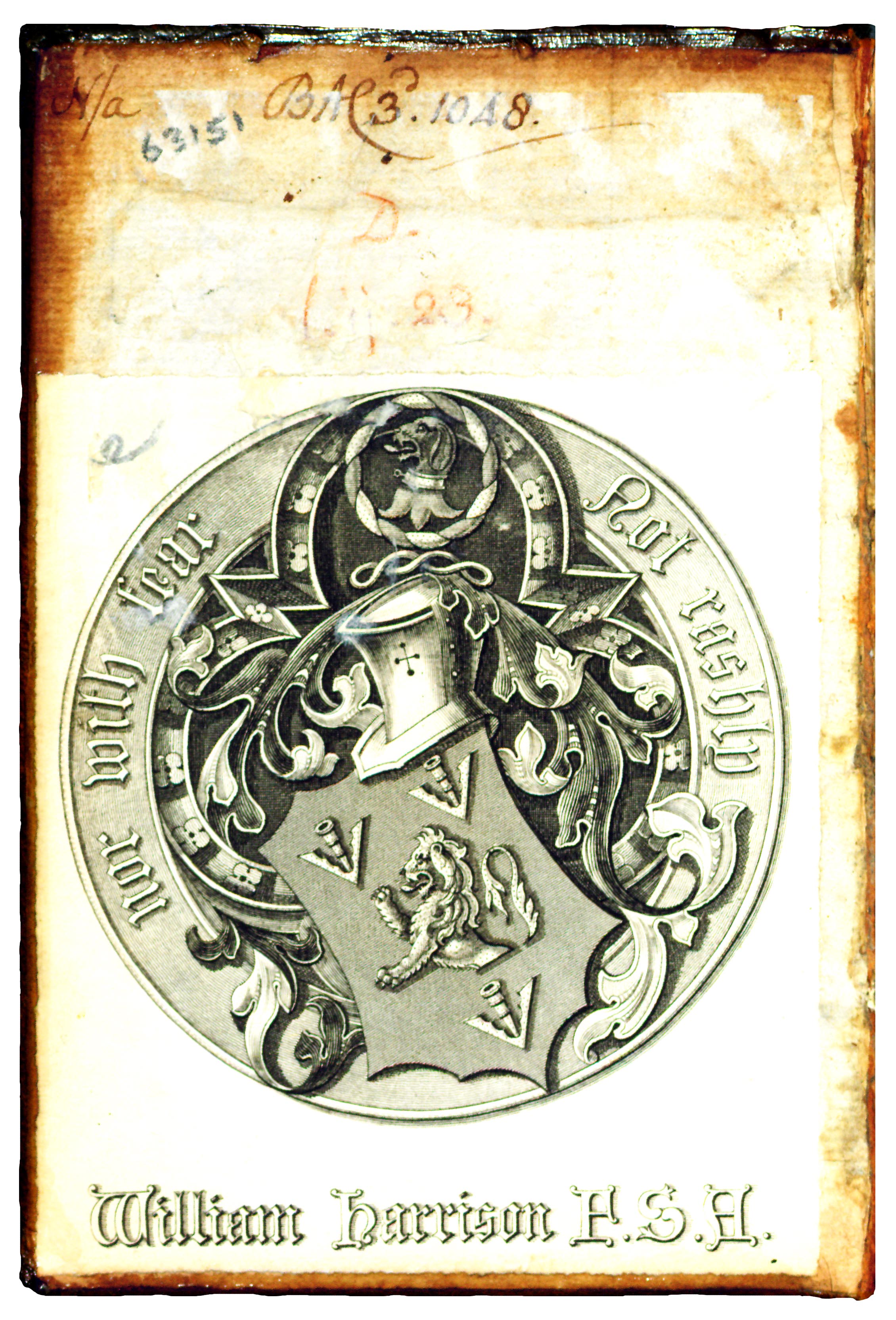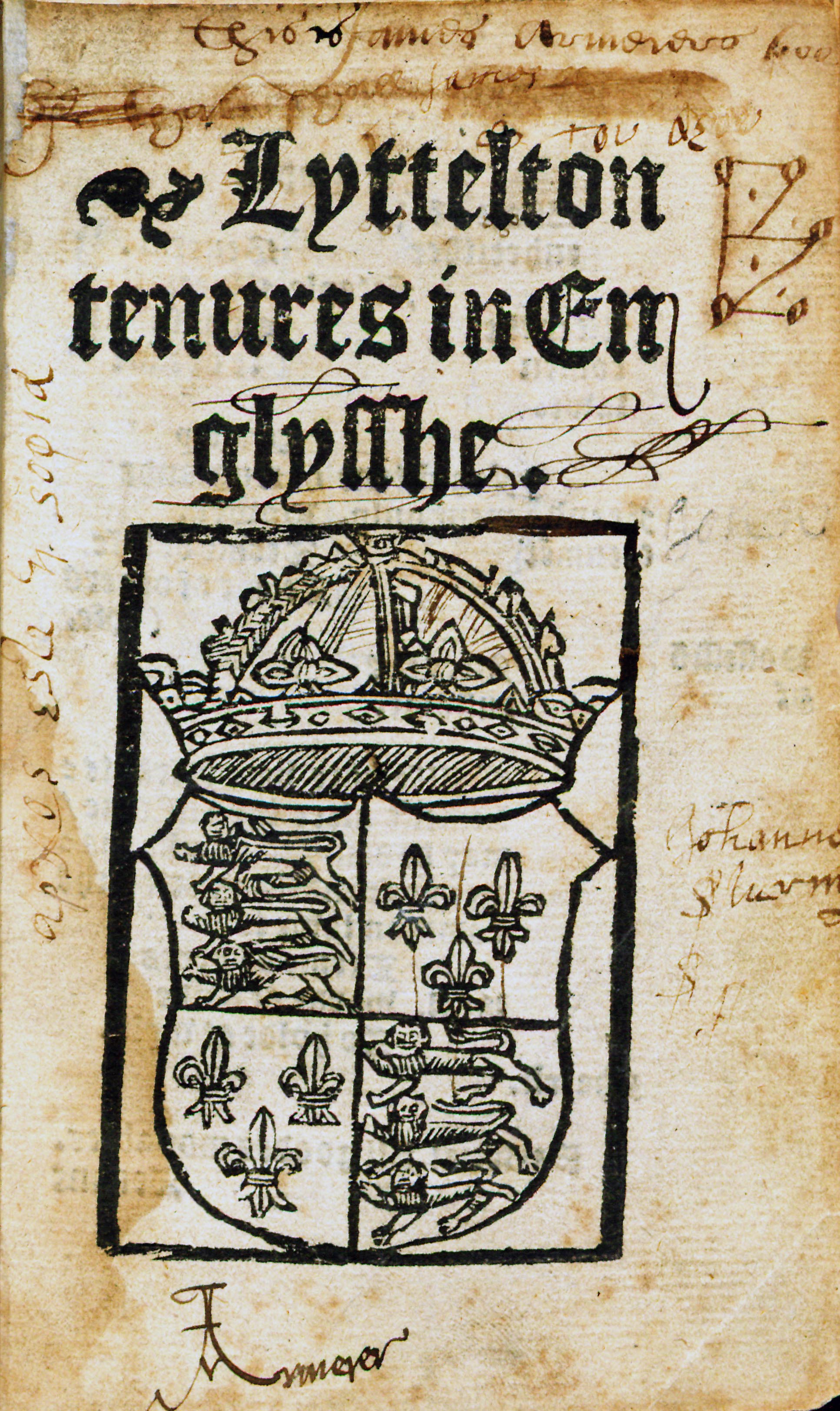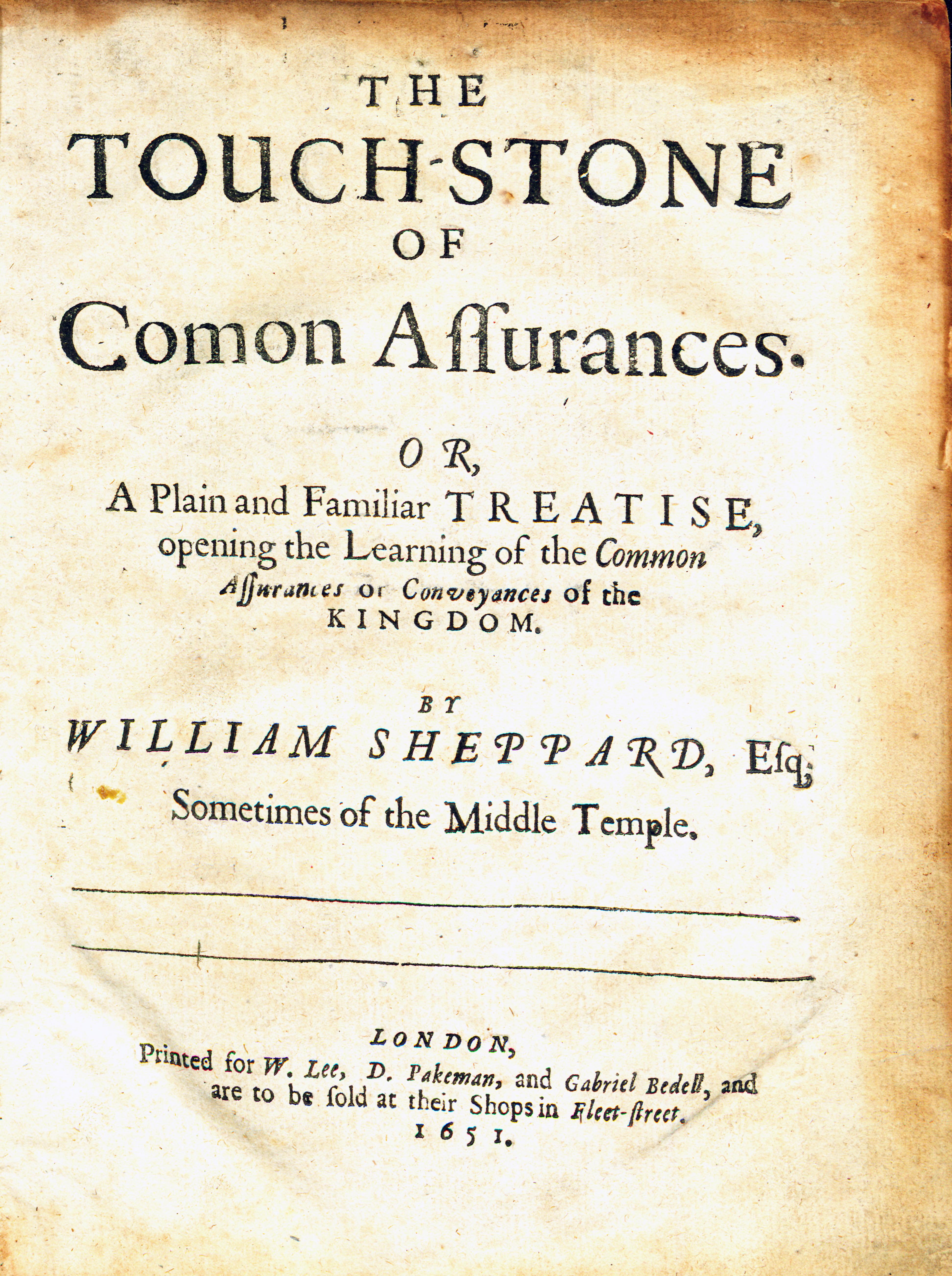|
Fragmenta Antiquitatis (1679)
The last work published by the author, Fragmenta Antiquitatis, includes "various curious tenures and customs of manors" which he discovered in compiling Nomo–Lexicon. In preserving the memory of many of these customs, Thomas Blount (1618–1679) manages to produce a book which is both humorous and enlightening.
|

|
Blount, Thomas. Fragmenta Antiquitatis. Antient Tenures of Land and Jocular Customs of Some Mannors: Made Publick for the Diversion of Some, and Instruction of Others. 1st ed. London: Printed by the Assigns of Richard and Edward Atkins, for Abel Roper and Christopher Wilkinson, 1679.
|
|
|
The First Part of the Institutes of the Lawes of England (1628)
Perhaps the most influential legal treatise of the seventeenth century, Sir Edward Coke's First Institute, or Coke on Littleton, became the de facto textbook for aspiring lawyers in both England and the colonies. Written with the intent to explain and embellish Sir Thomas Littleton's (c.1407–1481) Tenures, Coke's masterwork moved beyond Littleton's topic of property law, managing to touch upon issues such as mercantile law, negligence, pleading, and felonies. Through this work and others, Coke (1552–1634) made a profound impact on developing colonial sensibilities regarding liberty and the inherent rights of the people.
|

|
Coke, Sir Edward. The First Part of the Institutes of the Lawes of England, Or, a Commentarie upon Littleton. 1st ed. London: Printed for the Societie of Stationers, 1628.
|

|
Proemium, Sir Edward Coke, The First Part of the Institutes of the Lawes of England, 1628.
|
|
|
Insititutions (1601)
Written for the beginning student and focusing mainly on issues of property, Institutions was first published in 1538. A popular work even amongst practitioners, it was repeatedly republished with as many as twenty editions appearing into the seventeenth century. This copy includes the bookplate of William Harrison of Salmesbury Hall, Preston, Lancashire on the front pastedown and earlier owners' signatures to the front endleaf and title page.
|

|
Institutions or Principall Grounds of the Lawes and Statutes of England. London: Printed by Thomas Wight, 1601.
|

|
Front pastedown, with the bookplate of William Harrison, F.S.A. (Fellow of the Society of Antiquaries of London), in Institutions or Principall Grounds of the Lawes and Statutes of England, 1601.
|

|
Inscriptions, first front free endpaper, in Institutions or Principall Grounds of the Lawes and Statutes of England, 1601.
|
|
|
Littleton's Tenures (1541?, 1556, and 1671)
The first law book printed in England, Littleton's Tenures has been published in over ninety editions. The first edition, in law French, appeared in 1481 or 1482, shortly after Sir Thomas Littleton's death. Designed for his son as an introduction to the law, the book quickly became the standard textbook for legal students. Littleton (c.1407–1481) summarizes decisions from the Year Books and explains the reasoning and arguments behind them in clear and direct language. He focuses primarily on land law, the most important aspect of common law in his day. These three copies represent English translations printed after the first English edition in 1531. The 1671 edition was the first with parallel texts in English and French.
|

|
Littleton, Sir Thomas. Lyttleton Tenures in Englysshe. London: Thomas Petyt, 1541?
|

|
Littleton, Sir Thomas. Lyttilton Tenures Truelye Translated into Englishe. London: Thomas Marshe 1556.
|

|
Littleton, Thomas. Littleton's Tenures, in French and English, with an Alphabetical Table of the Principal Matters Therein Contained. London: Printed by John Streater, James Flesher, and Henry Twyford, assigns of Richard Atkins, and Edward Atkins, 1671.
|
|
|
The Touch-Stone of Common Assurances (1651)
When originally published in 1648, The Touchstone was the first treatise to focus on the theory of conveyancing. Based on twenty years of legal practice, William Sheppard (bap. 1595, d.1674) divides his subject into twenty-three sections, each featuring a meticulous discussion of a single conveyance augmented by citation to authorities, variants and exceptions. While some question Sheppard's authorship, The Touchstone itself enjoyed an unparalleled reputation for more than two centuries and became an unquestioned classic of Anglo-American law.
|

|
Sheppard, William. The Touch-Stone of Common Assurances, Or, A Plain and Familiar Treatise, Opening the Learning of the Common Assurances or Conveyances of the Kingdom. 2nd ed. London: Printed for W. Lee, D. Pakeman, and Gabriel Bedell, 1651.
|

|
Page seven of William Sheppard's The Touch-Stone of Common Assurances, 1651, with previous owner's marginalia.
|